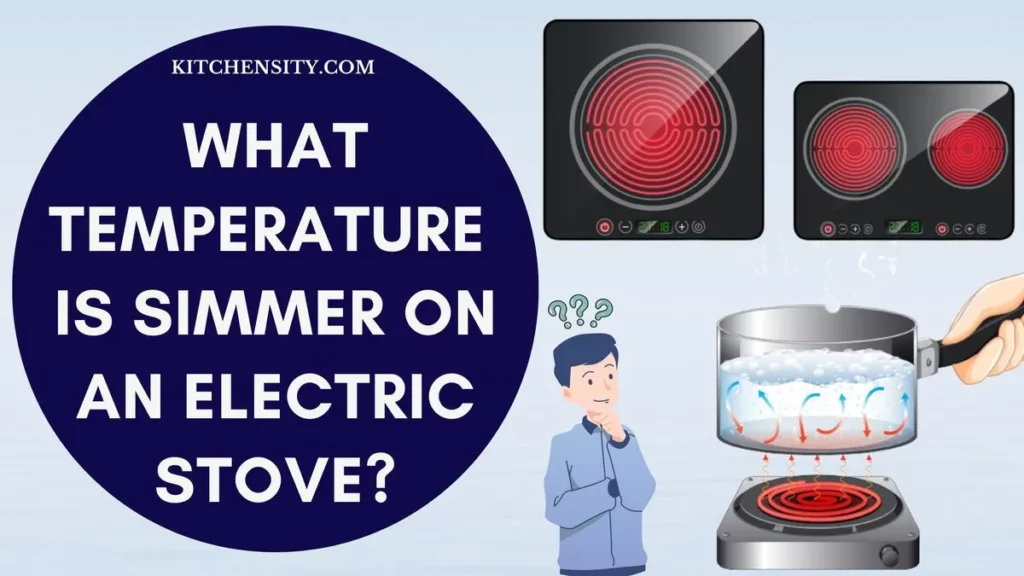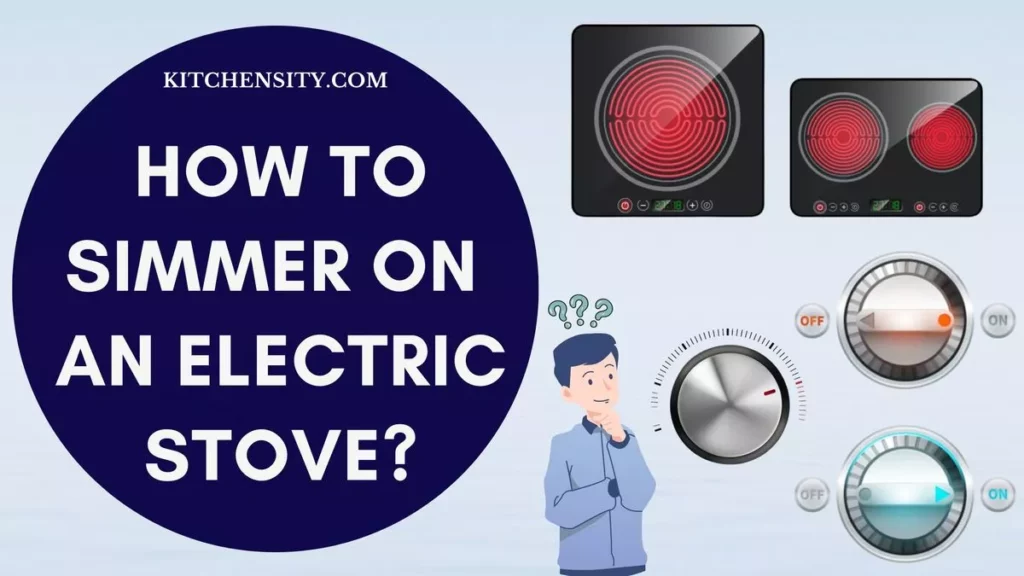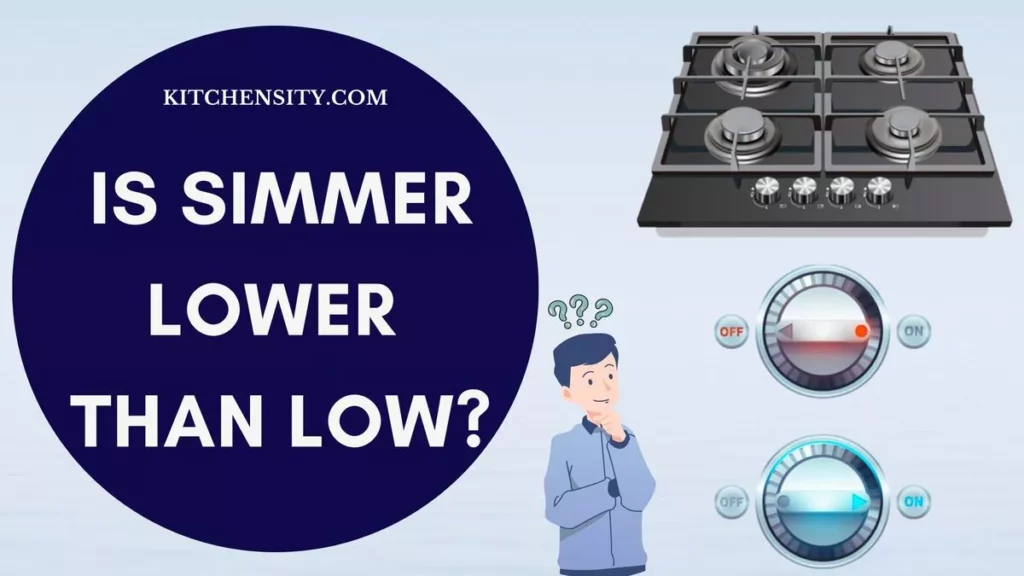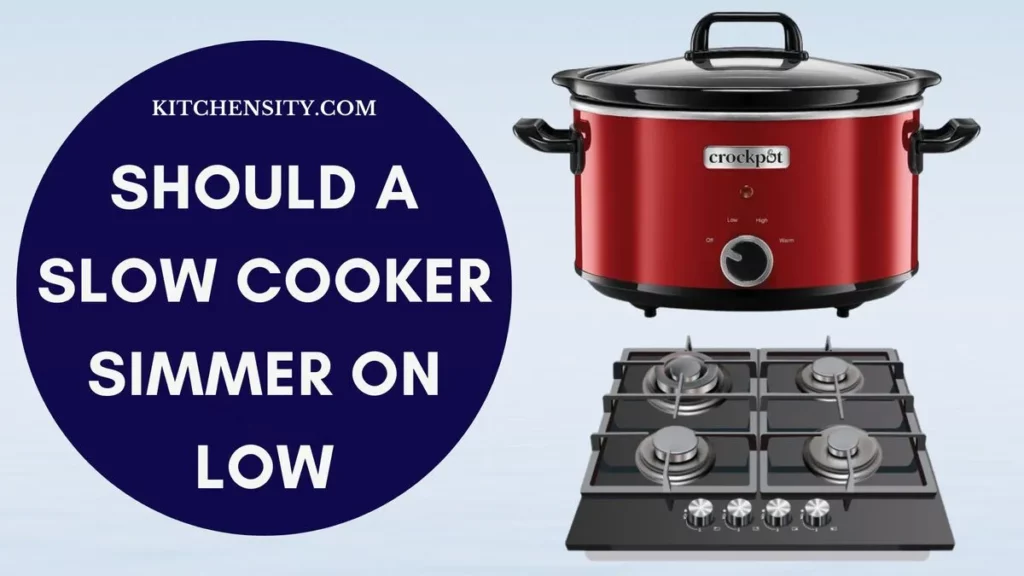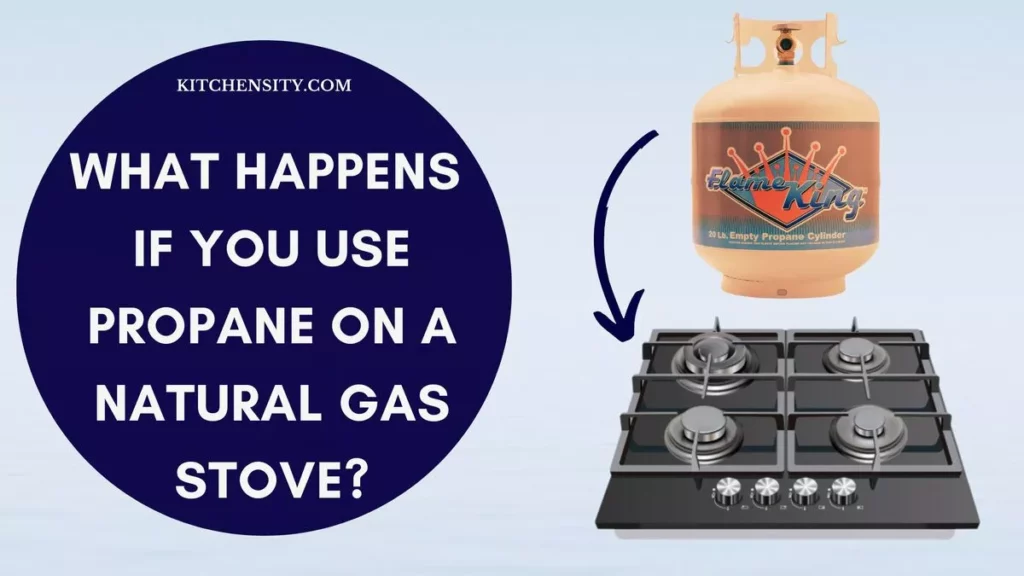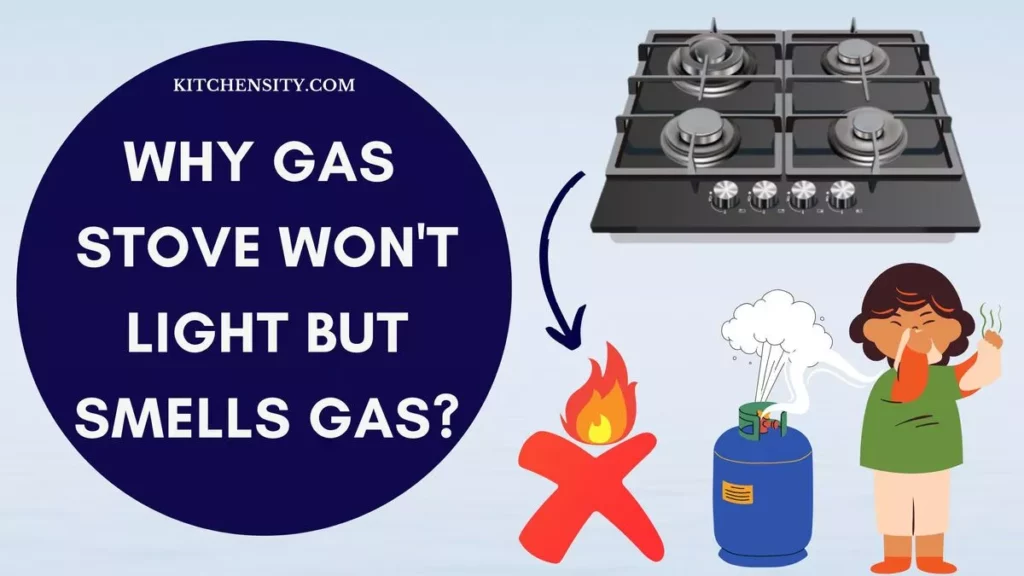Ever wondered if there’s more to boiling water on a gas stove than just making it hot? Well, you’re in for a kitchen adventure! Boiling water might seem like a simple task, but what if there’s a trick or two that could turn up the heat in a snap?
Can the right pot, a touch of lid magic, and a flame dance make boiling water on a gas stove a culinary spectacle?
Let’s embark on a quest to uncover the mysteries behind the perfect boil and find out if there’s more bubbling beneath the surface of our everyday cooking routine. Join the exploration – it’s time to make your gas stove the star of the boiling show!
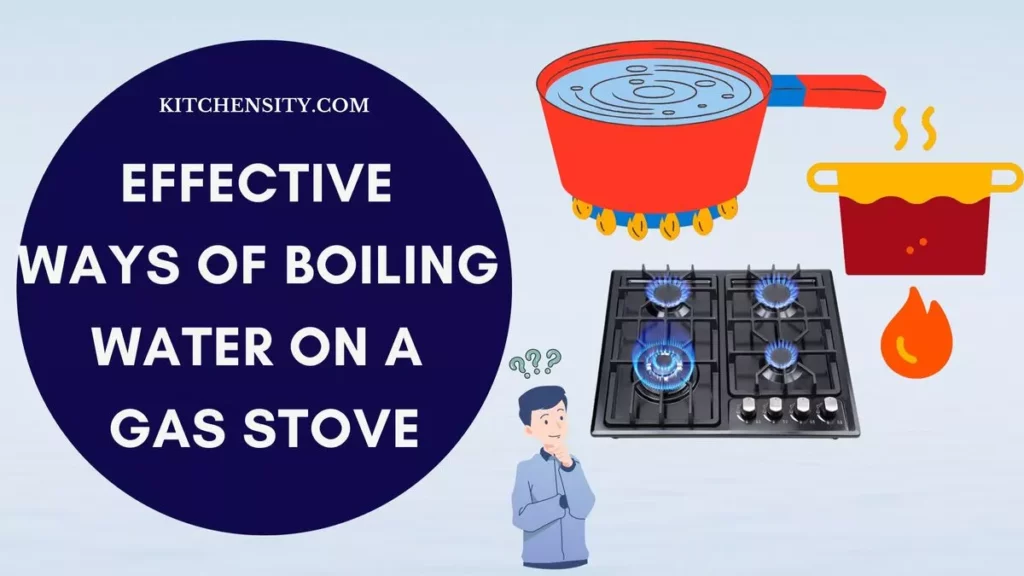
Table of Contents
- 1 Effective Ways Of Boiling Water On A Gas Stove
- 2 The Science Behind Boiling Water
- 3 How To Boil Water On A Gas Stove?
- 4 How Long Should It Take To Boil Water On A Gas Stove?
- 5 How Long Does It Take For Water To Boil On High?
- 6 How Long Does It Take To Boil 2 Cups Of Water?
- 7 How To Know When Water Is Boiled?
- 8 My Stove Takes Forever To Boil Water! Why Does It Take So Long To Boil Water On A Gas Stove?
- 9 What Number Should I Put My Stove On To Boil Water?
- 10 Does Water Quality Matter When Boiling?
- 11 Boiling Water For Cooking Different Items
- 12 How To Boil Water Faster?
- 13 Innovations In Boiling Technology
- 14 Final Thoughts
- 15 FAQs: Boiling Water On A Gas Stove
- 15.1 Is Boiling Water On A Gas Stove Better Than Using An Electric Kettle?
- 15.2 Why Doesn’t Water Boil On My Gas Stove?
- 15.3 Can I Reuse Boiled Water For Cooking?
- 15.4 How Can I Make Boiling Water More Energy-Efficient?
- 15.5 Are There Health Benefits To Drinking Boiled Water?
- 15.6 What’s The Quickest Way To Boil Water On A Gas Stove?
Effective Ways Of Boiling Water On A Gas Stove
- To boil water on a gas stove effectively, use a pot that matches the quantity you need, preventing unnecessary heat loss.
- Cover the pot with a lid to trap heat, speeding up the boiling process, and choose the appropriate burner size for efficient heat transfer.
- Adjust the flame to a medium-high setting for a balanced and efficient boil, and remember to turn off the stove once the water reaches its boiling point to save energy.
Also Read – Why Electric Stoves Take Forever To Boil Water?
The Science Behind Boiling Water
Boiling water is a process driven by heat energy. As water absorbs heat, its molecules gain energy, causing them to move more rapidly. At the boiling point, the energy surpasses the forces holding the liquid together, leading to the conversion of water into vapor or steam. This boiling point is influenced by factors like atmospheric pressure and altitude.
Impurities in water can also affect boiling behavior. Understanding this scientific process is crucial for precise cooking and appreciating the fundamental transformation from liquid to vapor.
How To Boil Water On A Gas Stove?
Boiling water on a gas stove is a straightforward yet essential kitchen skill. Here’s a step-by-step guide to help you master this fundamental cooking task:
- Gather Your Materials:
- Select a pot appropriate for the amount of water you need to boil.
- Ensure the pot has a lid.
- Check Your Gas Stove:
- Make sure the stove is clean and in proper working condition.
- Confirm that you have a match or lighter for ignition.
- Fill The Pot: Fill the pot with the amount of water you require, considering the recipe or purpose.
- Place The Pot On The Burner: Position the pot securely on the burner. Ensure it’s centered to distribute heat evenly.
- Ignite The Gas Stove: Turn the gas knob to the “Ignite” position or use a match/lighter to ignite the burner.
- Adjust The Flame: Once ignited, adjust the flame to the desired level. A medium flame is generally suitable for boiling water.
- Cover The Pot: Place the lid on the pot. This helps the water reach boiling point faster by trapping heat.
- Wait For Boiling: Allow the water to heat. Small bubbles will form at the bottom before the water reaches a rolling boil.
- Monitor The Boiling: Keep an eye on the pot to prevent it from boiling over. Adjust the flame if necessary.
- Turn Off The Stove: Once the water reaches a vigorous boil, turn off the stove to save energy.
- Wait For Steam To Subside: After turning off the stove, wait for any excess steam to subside before removing the lid.
- Use Caution When Handling: Be cautious when handling the pot, as it will be hot. Use oven mitts or pot holders.
- Pour Or Use As Needed: Carefully pour the hot water or use it as directed by your recipe.
- Turn Off The Gas Stove: Ensure to turn off the gas stove once you’ve finished boiling the water.
- Clean Up: Allow the pot and stove to cool before cleaning. Wipe down surfaces to maintain a clean cooking environment.
Also Read – My Electric Stove Burner Stays On High
How Long Should It Take To Boil Water On A Gas Stove?
The time it takes to boil water on a gas stove depends on several factors, including the amount of water, the pot’s size, the intensity of the flame, and the starting temperature of the water. Here are some general guidelines:
- Small Quantities (1-2 Cups): It typically takes a few minutes, around 3 to 5 minutes, to bring a small amount of water to a boil on a medium to high flame.
- Medium Quantities (4-6 Cups): Boiling larger quantities will naturally take longer. Expect it to take around 8 to 12 minutes for 4 to 6 cups of water.
- Large Quantities (8 Cups Or More): Boiling a larger pot of water, such as pasta or soups, may take 15 minutes or more.
- Altitude Considerations: At higher altitudes, where atmospheric pressure is lower, water boils at a lower temperature. This can increase boiling time, so it might take a bit longer to achieve a rolling boil.
- Covering The Pot: Using a lid on the pot can significantly speed up the boiling process by trapping heat. This is especially helpful when boiling larger quantities of water.
- Higher Heat Settings: If you need water to boil quickly, use a high flame setting. However, be cautious to avoid boiling over.
- Starting Water Temperature: If you begin with hot tap water instead of cold, it will reduce the time needed to reach boiling.
Also Read – What Is An Auto-Ignition Gas Stove?
How Long Does It Take For Water To Boil On High?
The time it takes for water to boil on high heat depends on various factors, including the quantity of water, the pot’s size, the initial temperature of the water, and the intensity of the heat source. Here are some approximate times for boiling water on high heat:
- Small Quantities (1-2 Cups): It may take around 2 to 4 minutes for a small quantity of water to come to a boil on high heat.
- Medium Quantities (4-6 Cups): Boiling a medium amount of water can take approximately 6 to 8 minutes on high heat.
- Large Quantities (8 Cups Or More): Boiling a larger pot of water, especially for cooking, might take 10 to 15 minutes or more on high heat.
- Altitude Considerations: At higher altitudes, water boils at a lower temperature due to reduced atmospheric pressure. This can increase the boiling time, so it might take a bit longer to achieve a rolling boil.
- Covering The Pot: Using a lid on the pot can expedite the boiling process by trapping heat, reducing the overall boiling time.
It’s important to keep a close eye on the water while it’s heating, particularly when using high heat, to avoid boiling over. Additionally, once the water reaches a rolling boil, turning the heat down to a simmer is advisable to conserve energy and prevent unnecessary evaporation.
Also Read – Difference Between Self-Ignition And Auto-Ignition
How Long Does It Take To Boil 2 Cups Of Water?
Boiling 2 cups of water on a gas stove usually takes around 2 to 4 minutes, depending on several factors. The actual time can be influenced by the specific heat output of your stove, the pot’s size and material, the starting temperature of the water, and the altitude of your location.
Here are some general guidelines:
- Medium Heat: If you set your gas stove to medium heat, it might take around 3 to 4 minutes for 2 cups of water to come to a boil.
- High Heat: Using high heat can significantly reduce boiling time. On high heat, it may take approximately 2 to 3 minutes for 2 cups of water to reach a rolling boil.
- Altitude Considerations: If you’re at a higher altitude, where water boils at a lower temperature due to reduced atmospheric pressure, it might take a bit longer.
- Covering the Pot: Using a lid on the pot can help trap heat and expedite the boiling process, potentially reducing the time needed.
Keep in mind that these are general estimates, and actual boiling times may vary. It’s always a good practice to keep an eye on the water while it’s heating to prevent boiling over and to turn off the stove once the water reaches a rolling boil to conserve energy.
Also Read – Brass Burners Vs Stainless Steel Stove Burners
How To Know When Water Is Boiled?
Knowing when water has reached the boiling point is crucial for various cooking and beverage preparation tasks. Here are several ways to determine when water is boiled:
- Bubbles Formation: As the water heats up, you’ll notice small bubbles forming on the bottom of the pot. As the temperature rises, these bubbles will increase in size and frequency.
- Steam Emission: Steam is a clear indicator of boiling water. Once the water reaches its boiling point, you’ll see steam rising from the surface. The intensity of the steam indicates the vigor of the boil.
- Rolling Boil: A rolling boil is characterized by large, continuous bubbles breaking on the surface of the water. When you observe a steady and vigorous boil, it’s a sign that the water has reached its boiling point.
- Audible Clues: Boiling water often produces a distinct sound. The bubbling and hissing noise become more pronounced as the water approaches and reaches the boiling point.
- Visual Changes In Water: The water may exhibit visual changes, such as shimmering or a noticeable increase in motion, indicating that it’s transitioning from a liquid to a gaseous state.
- Use Of Thermometer: For precise temperature control, especially in cooking or brewing applications, you can use a kitchen thermometer to measure the water temperature. Water reaches its boiling point at 212°F (100°C) at sea level.
- Automatic Shut-Off Kettles: If you’re using an electric kettle with an automatic shut-off feature, it will turn off once the water reaches boiling point.
- Lid Lifts: If you’re using a pot with a lid, you may notice the lid lifting slightly due to the pressure buildup as the water boils.
Once you observe these signs, it’s advisable to turn off the heat source to prevent unnecessary evaporation and conserve energy. Also, be cautious when removing the lid or handling the pot, as hot steam can cause burns.
Also Read – Can You Paint Gas Stove Grates?
My Stove Takes Forever To Boil Water! Why Does It Take So Long To Boil Water On A Gas Stove?
If your gas stove is taking an unusually long time to boil water, several factors could be contributing to this issue. Here are some common reasons why it might be taking longer than expected:
- Low Heat Output: Check if the gas stove burner is producing an adequate flame. If the flame is weak, it won’t transfer enough heat to the pot, resulting in a prolonged boiling time.
- Incorrect Burner Size: Ensure you’re using a burner that matches the size of your pot. Using a small burner for a large pot or vice versa can inefficiently distribute heat, slowing down the boiling process.
- Pot Material: The material of your pot can affect how quickly it heats up. For example, aluminum and copper pots tend to conduct heat more efficiently than stainless steel.
- Pot Size: Using a pot that is too large for the amount of water you’re boiling can lead to slower heating. Opt for a pot that matches the quantity of water you need.
- Altitude: If you live at a high altitude, water boils at a lower temperature due to reduced atmospheric pressure. This can increase the time it takes for water to reach boiling point.
- Gas Pressure Issues: Check if there are any issues with the gas supply or pressure. Low gas pressure can result in a weak flame, impacting the stove’s efficiency.
- Burner Maintenance: Burners can accumulate debris and blockages over time, affecting their performance. Regularly clean and maintain your gas burners to ensure optimal functioning.
- Older Appliances: If your stove is old, it might not be as efficient as newer models. Aging components can lead to reduced heat output and slower boiling times.
- Stove Ignition Issues: Ensure that the stove ignites properly. If there are ignition problems, it can delay the start of the boiling process.
- Energy Efficiency Settings: Some modern stoves come with energy-efficient settings, which may result in a slower heating process. Check the user manual to ensure you’re using the stove in the desired setting.
Also Read – Do Electric Stoves Use Gas? Unveil
What Number Should I Put My Stove On To Boil Water?
The ideal stove setting for boiling water can vary based on the stove model, the type of pot you’re using, and the altitude of your location. However, here are some general guidelines to help you set your stove for boiling water:
- High Heat (8 to 10): For a quick boil, set your gas stove to a high heat setting. This is especially effective for smaller quantities of water, like one or two cups.
- Medium-High Heat (6 to 8): If you’re boiling a moderate amount of water, such as four to six cups, setting the stove to medium-high heat is a good balance between speed and preventing the water from boiling over.
- Medium Heat (4 to 6): For larger quantities of water, like eight cups or more, a medium heat setting may be sufficient. This helps avoid rapid boiling and potential spills.
- Adjust as Needed: Keep a close eye on the water as it heats. If you notice it’s taking too long or not boiling vigorously enough, you can adjust the heat setting accordingly.
The size and material of the pot, altitude, and the efficiency of your stove all play a role in determining the optimal setting. It’s essential to monitor the water closely and adjust the heat as needed to achieve a steady, rolling boil without risking a boil-over. Also, consider using a lid on the pot, as it can help trap heat and expedite the boiling process.
Also Read – How To Clean Electric Stove Burners And Drip Pans?
Does Water Quality Matter When Boiling?
Yes, water quality matters when boiling, and it can have implications for both the taste of the boiled water and the overall outcome of your cooking. Here’s why water quality is important:
- Taste And Odor: Impurities in water, such as minerals, chlorine, or other contaminants, can affect the taste and odor of the boiled water. Using clean, filtered water enhances the overall quality of the water you consume.
- Residue And Buildup: Hard water, which contains high levels of minerals like calcium and magnesium, can leave behind mineral deposits or scale on your pot. This residue can affect the taste of the water and impact the appearance of your cookware.
- Cooking And Baking: The quality of water used in cooking and baking can influence the taste and texture of your dishes. Impurities in water might alter the flavor of foods, especially in recipes where water plays a prominent role.
- Tea And Coffee: Boiling water with high mineral content may affect the flavor of tea and coffee. Using filtered water can contribute to a purer taste in your hot beverages.
- Health Considerations: Boiling water is a common method for purifying water and eliminating harmful microorganisms. However, boiling does not remove certain contaminants like heavy metals. Using water with good quality from a safe source is essential for health.
- Appliance Maintenance: Boiling water with high mineral content can lead to scale buildup in appliances like kettles and coffee makers. Regular descaling may be necessary to maintain appliance efficiency.
- Aesthetics: If you’re using boiled water for tasks like making ice cubes or watering plants, the quality of the water can influence the appearance and health of these items.
While boiling water can eliminate harmful microorganisms, starting with good quality water enhances the taste of beverages, preserves the lifespan of cookware and appliances, and contributes to the overall success of your cooking and culinary endeavors. Consider using filtered or purified water for the best results.
Also Read – How To Clean An Electric Coil Stove Top?
Boiling Water For Cooking Different Items
Boiling water is a fundamental technique in the culinary world, playing a pivotal role in cooking a variety of items. Whether you’re preparing pasta, vegetables, grains, or certain proteins, mastering the art of boiling water is essential. Let’s explore how boiling water is used for cooking different items:
- Pasta And Noodles: Boiling water is a crucial step in cooking pasta and noodles. Add salt to the boiling water for flavor, then cook the pasta until it reaches the desired level of doneness. The boiling process helps achieve the right texture and consistency.
- Vegetables: Boiling is a common method for cooking vegetables quickly. It’s essential to use a large pot of boiling water to ensure even cooking. Blanching vegetables in boiling water helps retain their vibrant colors, nutrients, and crispness.
- Rice And Grains: Boiling water is the starting point for cooking rice and various grains. Once the water is boiling, grains like rice can be added, and the cooking process begins. Proper water-to-grain ratios and cooking times are crucial for achieving perfect texture.
- Eggs: Boiling water is used to cook eggs, whether for hard-boiled eggs or soft-boiled eggs. The boiling process sets the proteins in the egg whites and yolk, resulting in different textures based on the cooking time.
- Potatoes: Boiling is a common method for cooking potatoes before mashing, roasting, or using in salads. It helps soften the potatoes and makes them versatile for various recipes.
- Seafood: Boiling is employed for cooking various seafood items, such as shrimp, crab, and lobster. The precise boiling time ensures that the seafood is cooked to perfection without becoming tough or overcooked.
- Dried Legumes: Boiling water is used to cook dried legumes, including beans, lentils, and chickpeas. Soaking these legumes before boiling can reduce cooking time and improve digestibility.
- Rehydrating Ingredients: Boiling water is often used to rehydrate certain ingredients, such as dried mushrooms or sun-dried tomatoes, before incorporating them into recipes.
- Blanching And Peeling Tomatoes: Boiling water is employed in blanching tomatoes to facilitate easy peeling. The brief immersion in boiling water loosens the tomato skin, making it easier to remove.
- Preparing Gelatin And Instant Mixes: Boiling water is used to dissolve gelatin and prepare various instant mixes like soups, desserts, and beverages.
In each case, the boiling process is not only about applying heat but also about achieving specific results in terms of texture, flavor, and overall culinary outcome. Mastering the nuances of boiling water for different ingredients is a foundational skill in the kitchen.
Also Read – Can You Replace Burners On An Electric Stove?
How To Boil Water Faster?
Boiling water faster can be advantageous in a variety of situations, whether you’re in a hurry or looking to save time and energy. Here are some effective tips to speed up the boiling process:
- Use A Lid: Covering the pot with a lid traps heat and helps the water reach its boiling point more quickly. This reduces heat loss and accelerates the boiling process.
- Choose A Smaller Pot: Using a pot that closely matches the amount of water you need to boil reduces the surface area exposed to the air. This means less heat is lost, and the water heats up faster.
- Start With Hot Tap Water: If you’re in a rush, consider starting with hot tap water instead of cold. This can significantly reduce the time it takes for the water to reach boiling point.
- Use Hot Water From A Kettle: If you have a kettle, consider heating water in it first and then transferring it to the pot. Kettles are designed for efficient water heating and can expedite the process.
- Increase The Heat: Setting your stove to a higher heat setting will generate more heat, leading to a faster boil. Just be cautious not to set it too high to avoid boiling over.
- Cut Food Into Smaller Pieces: When boiling ingredients like vegetables or potatoes, cutting them into smaller pieces can reduce the overall cooking time.
- Use Boiling Water From A Thermos: If you have access to a thermos, you can preheat water and pour it directly into the pot. This saves time compared to starting with cold water.
- Use An Electric Kettle: Electric kettles are specifically designed for rapid water boiling. If time is of the essence, consider using an electric kettle for boiling water quickly.
- Add Salt: Adding salt to water not only enhances flavor but can also raise the boiling point slightly, speeding up the process.
- Select The Right Burner: Match the pot size with the burner size to ensure efficient heat transfer. Using a small pot on a large burner can result in heat loss.
- Boil In Batches: If you’re boiling a large quantity of water, consider doing it in batches rather than all at once. Smaller quantities heat up faster.
Also Read – Are Electric Stove Burners Interchangeable?
Innovations In Boiling Technology
Innovation in boiling technology has come a long way, introducing new methods and appliances that enhance efficiency, safety, and convenience in the kitchen. Here are some notable innovations in boiling technology:
- Electric Kettles With Variable Temperature Control: Modern electric kettles often feature variable temperature settings, allowing users to heat water to specific temperatures for different beverages. This is particularly useful for brewing tea, where water temperature is critical.
- Smart Kettles: Smart kettles are equipped with features like Wi-Fi connectivity and smartphone apps. Users can control the kettle remotely, set timers, and even receive notifications when the water is ready.
- Instant Boiling Water Taps: These taps, often integrated into kitchen sinks, provide instant boiling water on demand. They eliminate the need for a kettle and are convenient for tasks like making tea, coffee, or quick meals.
- Induction Cooktops: Induction cooktops use electromagnetic technology to heat the pot directly, achieving faster and more efficient boiling. They are also known for precise temperature control and energy efficiency.
- Thermal Insulated Kettles: Kettles with advanced insulation technology can keep water hot for extended periods, reducing the need for reheating and saving energy.
- Automatic Shut-Off Features: Many modern appliances, including kettles and stovetop burners, come with automatic shut-off features. This enhances safety by turning off the heat source once the water reaches boiling point.
- Multi-Function Cookware: Some cookware is designed with integrated heating elements, allowing for boiling, steaming, and cooking in a single pot. These multi-function cookware pieces streamline the cooking process.
- Energy-Efficient Boilers: Industrial and commercial boilers now incorporate energy-efficient technologies, such as condensing boilers that capture and reuse heat, reducing energy consumption.
- Instant Boiling Water Dispensers: These countertop appliances dispense boiling water at the touch of a button. They are commonly used in offices and homes where a quick and constant supply of hot water is needed.
- Digital Displays And Controls: Some high-end appliances come with digital displays and touch controls, allowing users to set precise temperatures and cooking times for boiling water.
- Sous Vide Precision Boiling: Sous vide water circulators offer precise temperature control for boiling. While primarily designed for sous vide cooking, they can also be used for accurately boiling water to specific temperatures.
- Instant Boil Technology: Certain stovetop burners are equipped with instant boil technology, delivering a rapid and intense flame for quicker boiling times.
These innovations not only make boiling water more efficient but also contribute to a safer and more convenient cooking experience. As technology continues to advance, we can expect even more exciting developments in the realm of boiling technology.
Also Read – Does A Gas Stove Need A Dedicated Circuit?
Final Thoughts
Boiling water on a gas stove is like a magic trick we do in the kitchen every day. It’s not just about making things hot; it’s about turning water into a dance of bubbles and steam.
We explored how the stove, the pot, and even the science behind it all make this simple act a bit of an art. But it’s not just about cooking; it’s about understanding the magic of heat and making it work for us.
And guess what? There’s cool stuff happening in the kitchen world. Imagine kettles talking to your phone or stovetops that can cook things just right without us guessing. It’s like our kitchens are getting little upgrades, keeping the old charm but adding some new tricks.
So, boiling water on a gas stove is not just about food; it’s about traditions, science, and a bit of kitchen magic. Next time you hear the pot bubbling away, remember it’s not just water getting hot – it’s a whole world of possibilities in the making. Cheers to boiling, bubbling, and the joy of simple kitchen wonders!
Also Read – Butane Vs Propane Stove
FAQs: Boiling Water On A Gas Stove
-
Is Boiling Water On A Gas Stove Better Than Using An Electric Kettle?
It depends on factors like energy efficiency, convenience, and personal preference. Gas stoves are often preferred for their control, while electric kettles may be more energy-efficient.
-
Why Doesn’t Water Boil On My Gas Stove?
Several reasons could prevent water from boiling on your gas stove. Check if the burner is working correctly, ensure there’s no blockage in the gas supply, use a pot that matches the burner size, and verify that the flame is reaching the pot. Also, make sure the stove is clean, and the burner ports are not clogged, affecting heat distribution.
-
Can I Reuse Boiled Water For Cooking?
While technically safe, it’s best to use freshly boiled water for cooking to ensure purity and eliminate any off-flavors that might develop on reheating.
-
How Can I Make Boiling Water More Energy-Efficient?
Use a lid, match the pot size to the burner, and turn off the stove when the water reaches boiling point to save energy.
-
Are There Health Benefits To Drinking Boiled Water?
Boiling water eliminates harmful microorganisms, making it a safer option. It may also help in digestion and detoxification.
-
What’s The Quickest Way To Boil Water On A Gas Stove?
Using a kettle, covering the pot with a lid, and selecting a high flame can speed up the boiling process.
Katrina Smith is a seasoned expert with over 25 years of experience in all things related to cooking and the kitchen. As an avid cook and kitchen enthusiast, she is passionate about sharing her knowledge and expertise on cookware, kitchen appliances, kitchen tips, and kitchen staples.
Through her articles and reviews, Katrina aims to inspire and help others improve their cooking skills, experiment with different ingredients, and invest in quality cookware and appliances.

